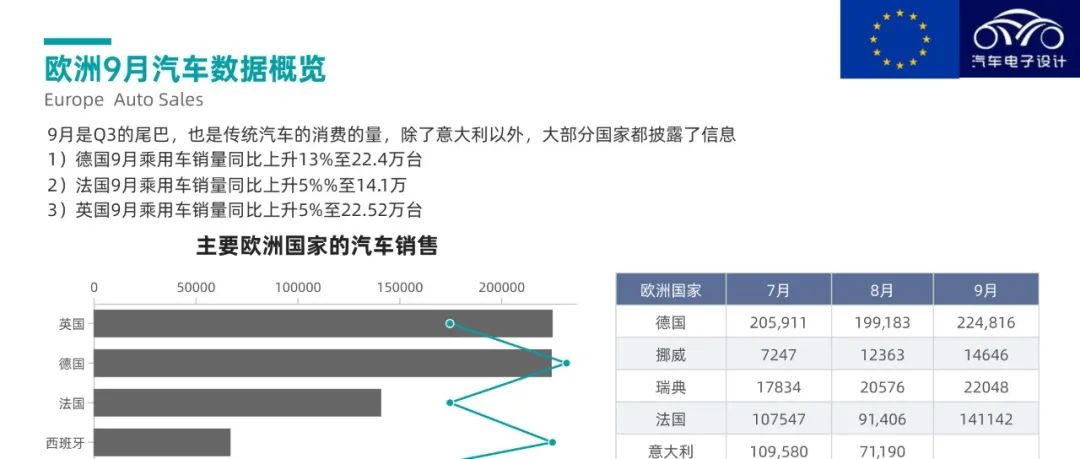Author: Zhu Yulong
The data pulse characteristics of Europe are obvious. As summer passes, Europe’s car sales and new energy vehicle consumption performed well in September. September is the tail of Q3, and it is also the volume of traditional car consumption. Except for Italy, most countries have disclosed information:
- Germany: passenger car sales in September increased by 13% year-on-year to 224,000 units
- France: passenger car sales in September increased by 5% year-on-year to 141,000 units
- UK: passenger car sales in September increased by 5% year-on-year to 225,200 units
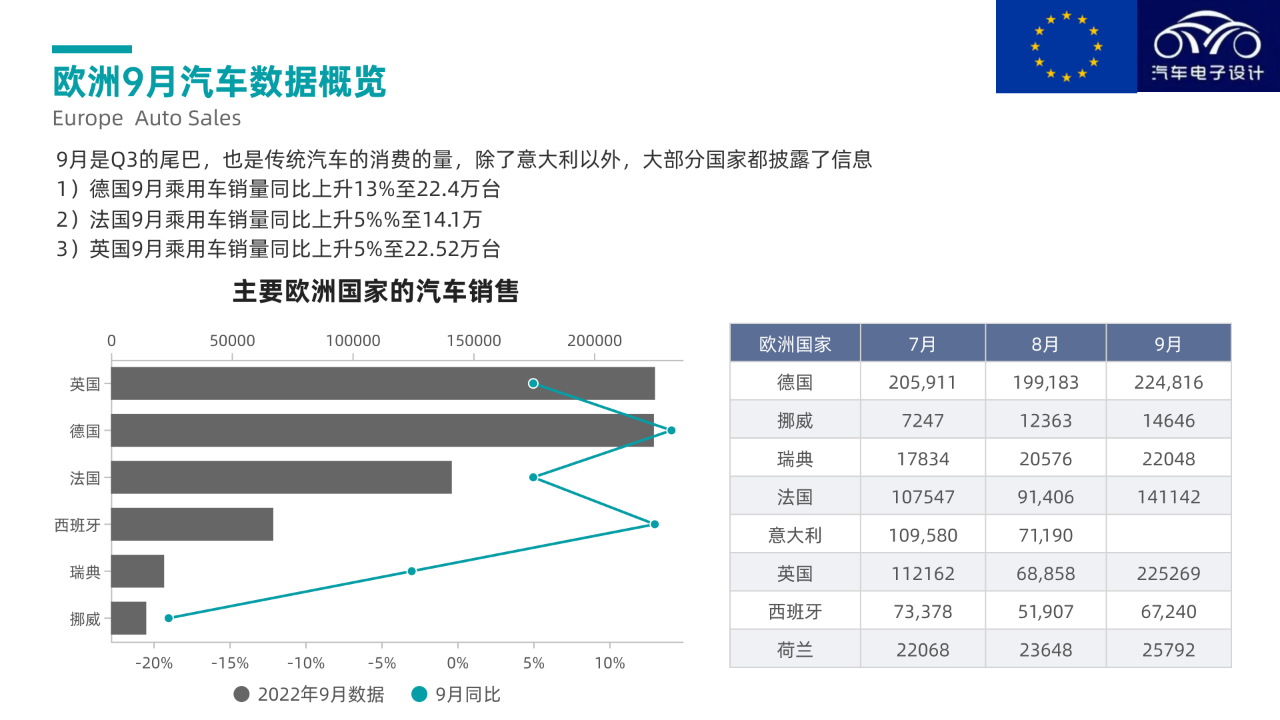
The overall data in September is good:
- Germany: 72,725 units
- UK: 50,391 units
- France: 34,101 units
- Norway: 13,053 units
- Sweden: 12,135 units
- Spain: 7,461 units
Compared with last year, the penetration rate of new energy in major markets in Europe has remained unchanged in 2022.
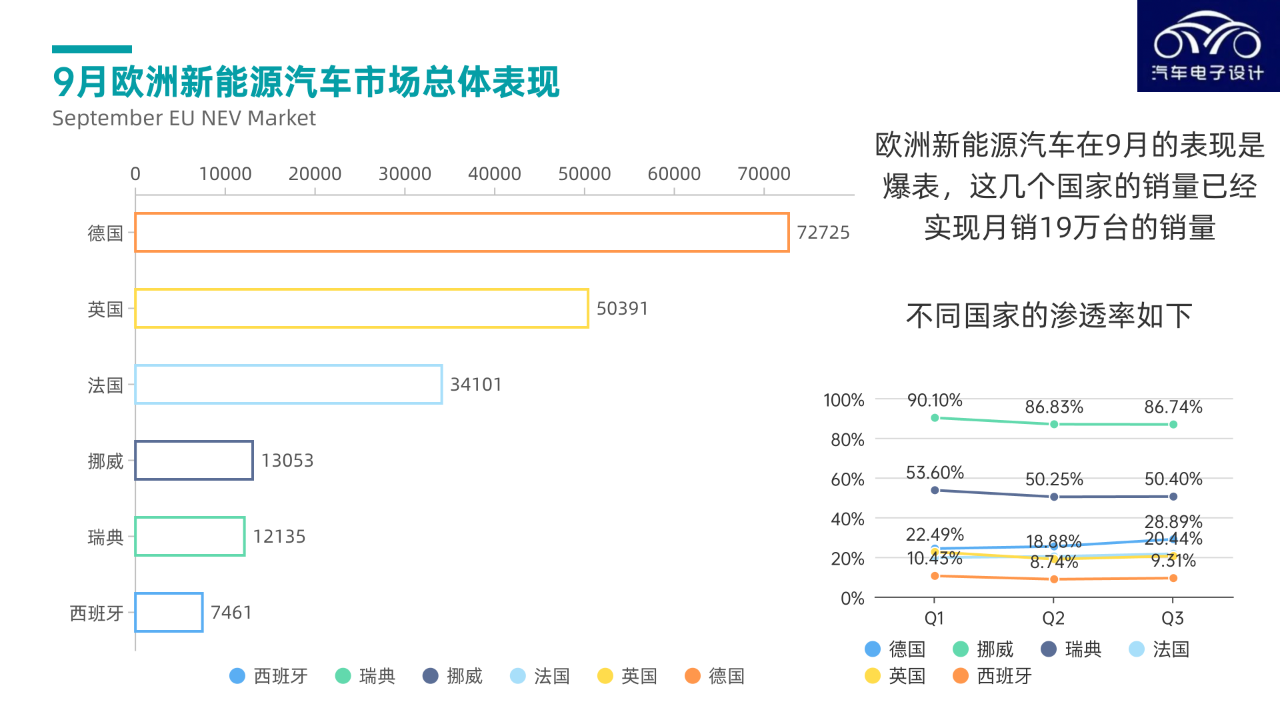
Sales situation in major countries
Although the overall performance is still good, the gap is not significant when looking at the quarter. Except for Germany’s slight improvement month-on-month, there is not much difference.
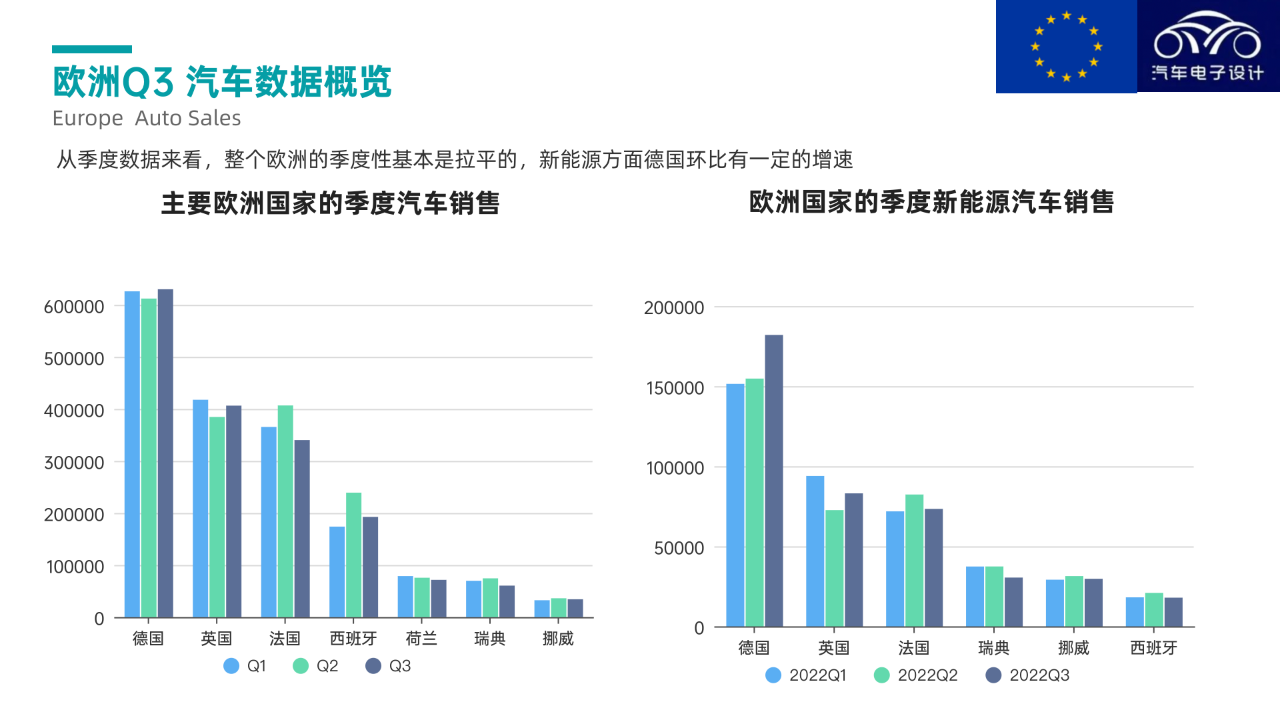
In terms of market size, there is no significant change in this quarterly end pulse pattern, but it can be seen that the monthly sales of electric vehicles in Germany have been enlarged to some extent, which is related to Germany as the largest automobile market in Europe and the memory effect of the upward penetration rate.
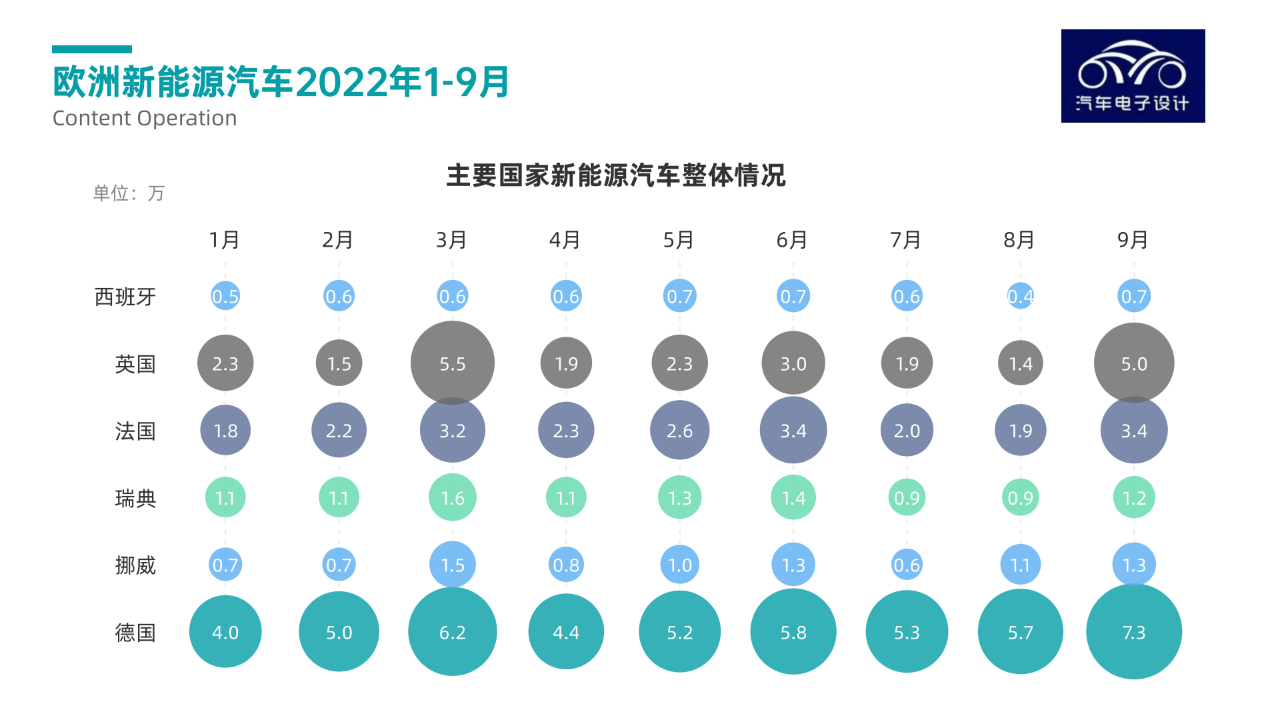
Next, we will take a closer look at the three major markets of France, Germany, and the UK.
France
The overall data for new energy vehicles in France is not particularly ideal. There are 22,483 pure electric vehicles and 11,618 plug-in hybrid vehicles. In Q3, there are 47,621 pure electric vehicles and 25,744 plug-in hybrid vehicles. From a sequential comparison, there is no significant driving force in the French market.
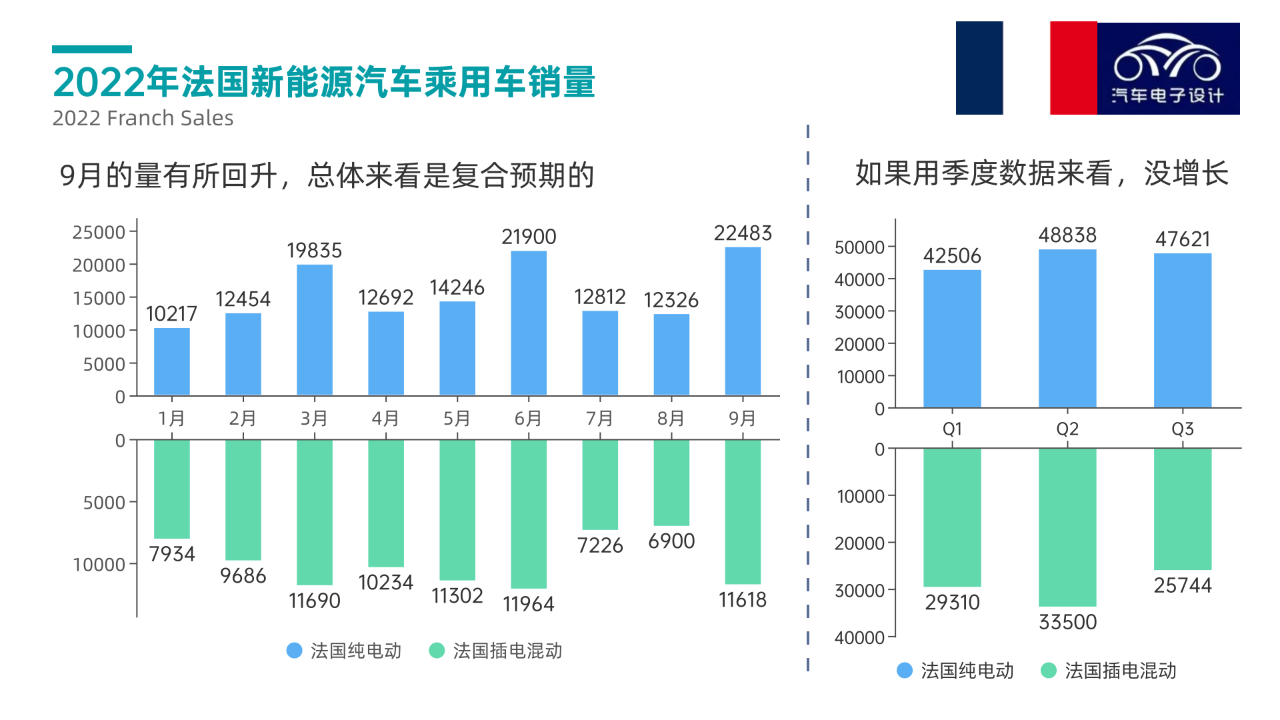
Germany
The sales of new energy vehicles in Germany have reached a new high, with 44,389 pure electric vehicles and 28,336 plug-in hybrid vehicles. In Q3, the number of pure electric vehicles exceeds 105,000, and plug-in hybrids are at 76,700. Among the 21,000 pure electric vehicles added in Q3 compared with Q2, Tesla added 16,000 vehicles to supply, so Tesla has become a big player in Germany.
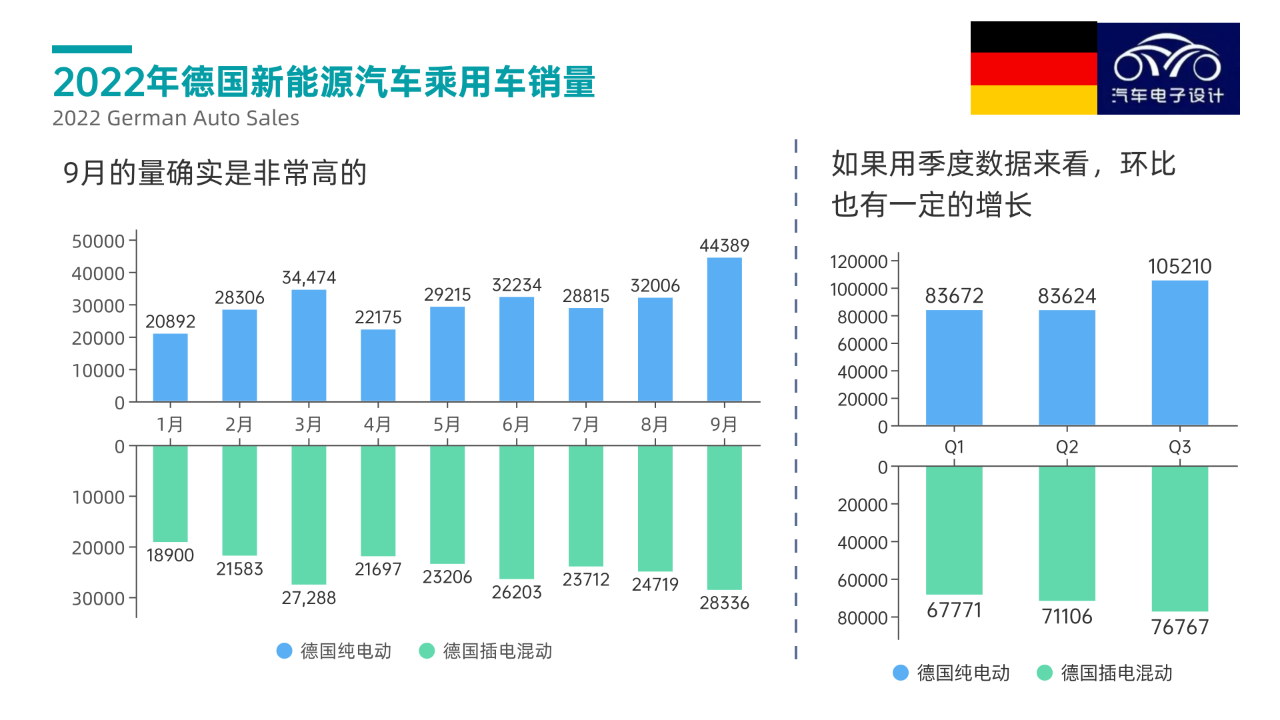
United Kingdom
With the subsidy for new energy vehicles in the United Kingdom ended, the sales of pure electric vehicles and plug-in hybrids in September were 38,116 and 12,281 respectively, which are still very good. In Q3, there were 60,365 pure electric vehicles and 22,700 plug-in hybrids.
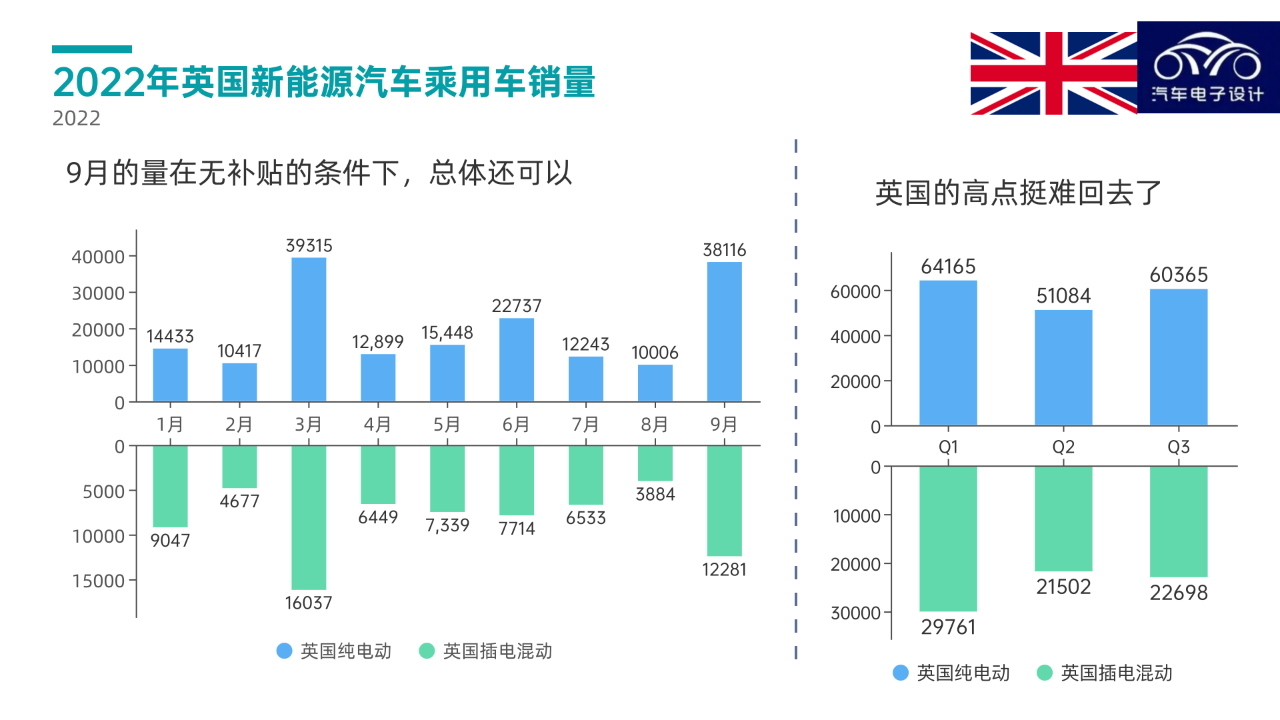
Tesla’s Performance in Major Countries
Let’s talk about Tesla’s performance in Europe that everyone cares about:
-
Germany: 13,724 delivered in September, and 38,456 delivered this year.
-
UK: 8,611 delivered in September, and 29,185 delivered this year.
-
France: 3,463 delivered in September, and 16,239 delivered this year.
-
Norway: 3,665 delivered in September, and 12,598 delivered this year.
-
Netherlands: 650 delivered in September, and 1,977 delivered this year.
-
Spain: 1,052 delivered in September, and 3,280 delivered this year.
-
Sweden: 917 delivered in September, and 5,076 delivered this year.
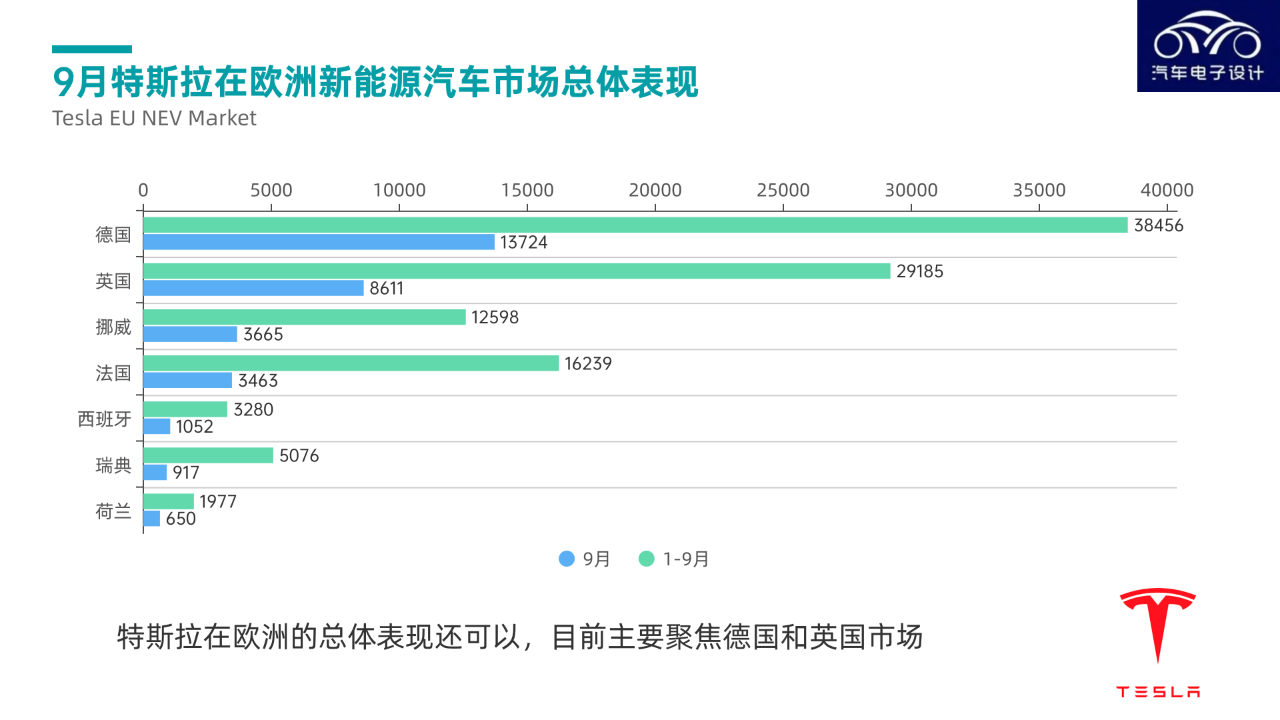
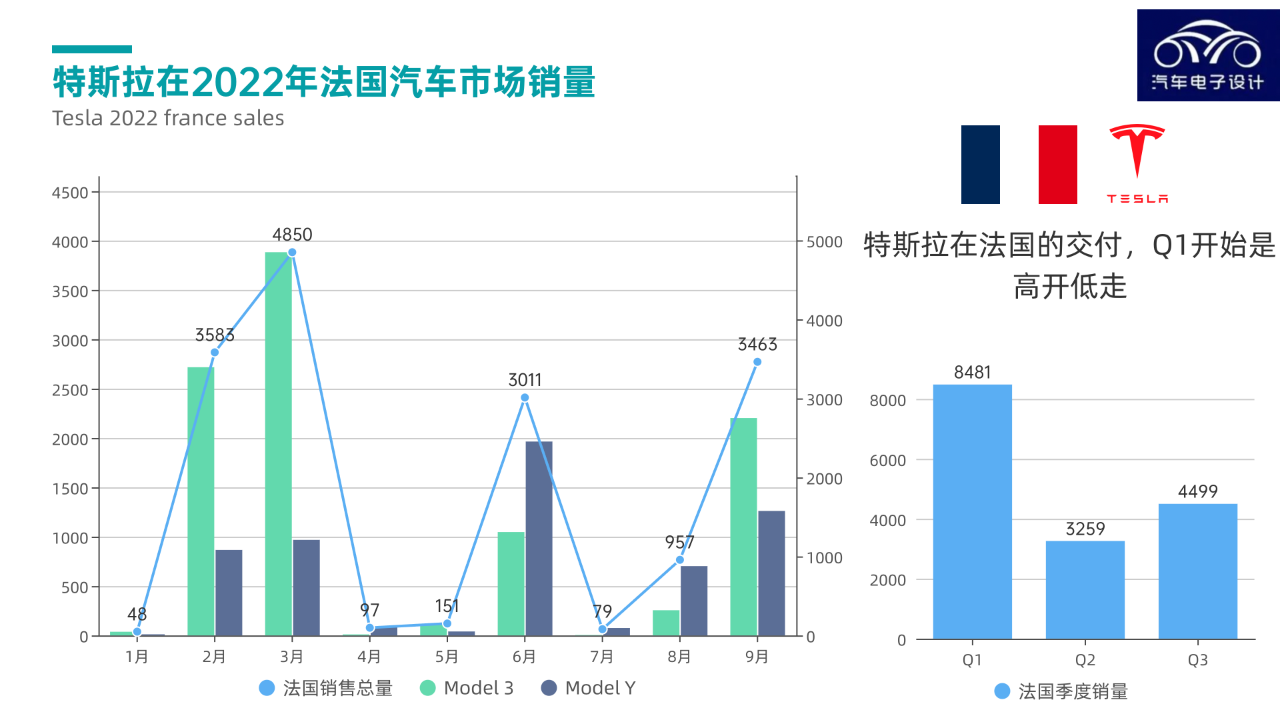
After the production capacity of 2,000 units per week was reached at the Berlin factory in Germany, Tesla delivered 13,724 units in Germany this month, exceeding 20,000 units for the quarter, which is still a very good number. With increased supply from Tesla in Europe, this number will continue to climb.
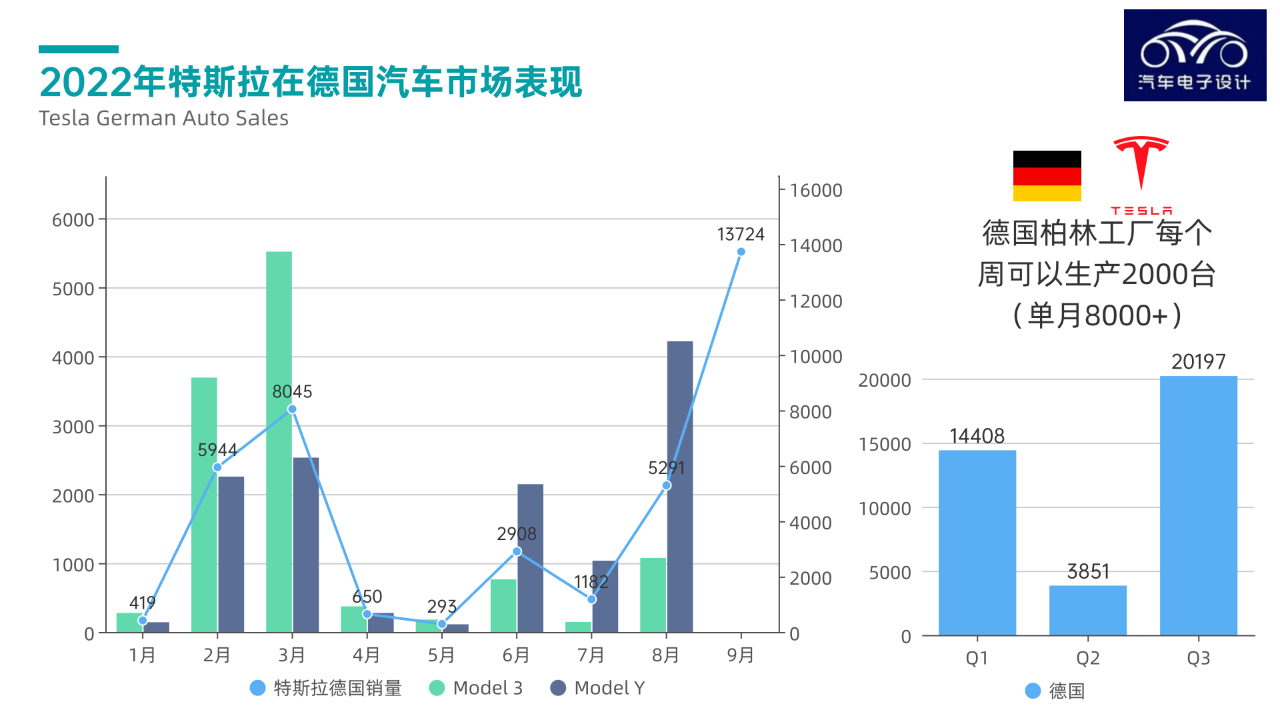
Tesla delivered 8,611 units in September and 9,515 units for the quarter. It may be difficult to surpass the preceding quarter Q1’s 14,393 units in the short term as subsidies were discontinued.
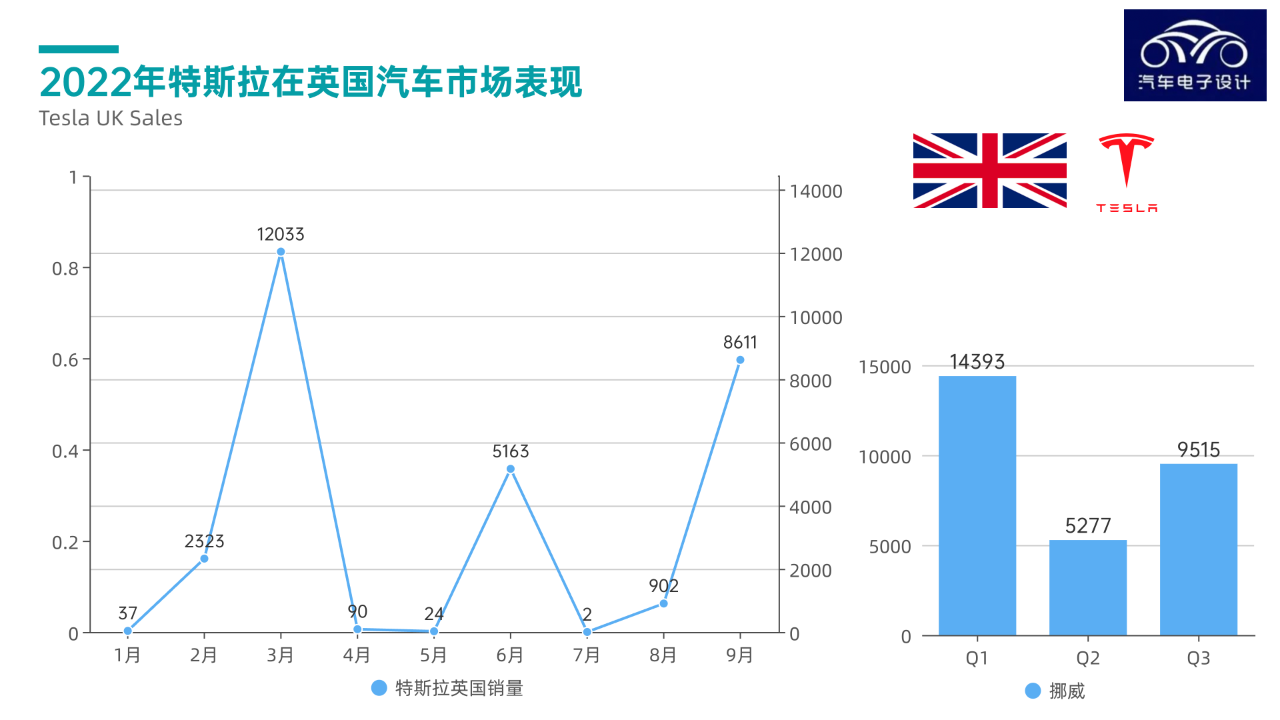
Q2 deliveries in Norway were relatively low and had a lot to do with the production capacity of the Shanghai factory. In September, 3,665 units were delivered, mainly Model Y, and 4,558 units were delivered in Q3.
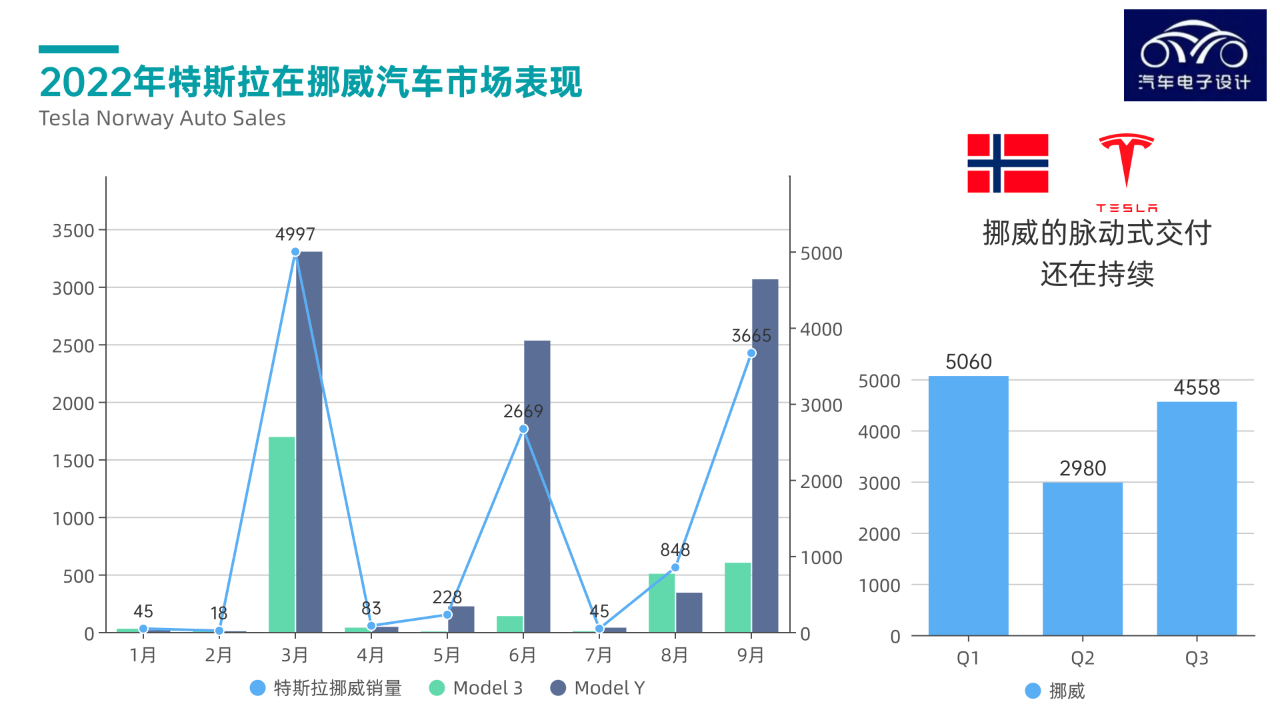
Conclusion: To sum up, I think the performance of BYD, NIO, and XPeng in the European market also needs to be tracked, and adding SAIC’s MG, a separate summary can be made.
This article is a translation by ChatGPT of a Chinese report from 42HOW. If you have any questions about it, please email bd@42how.com.
